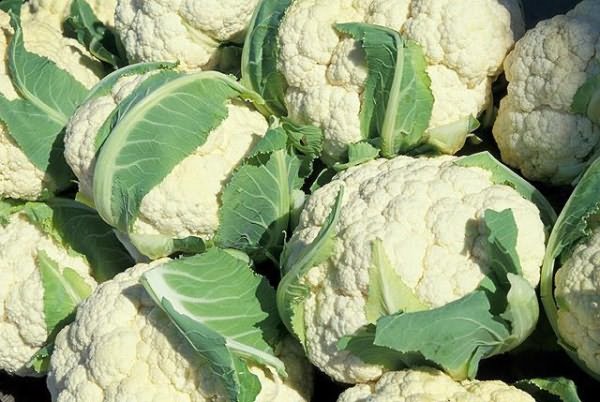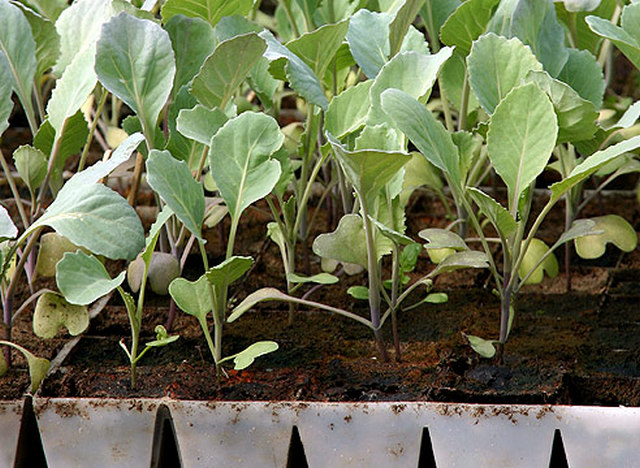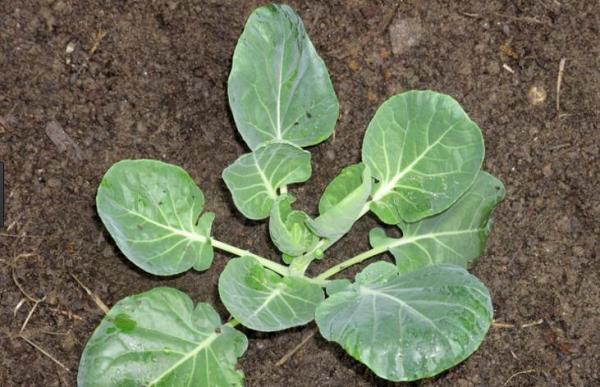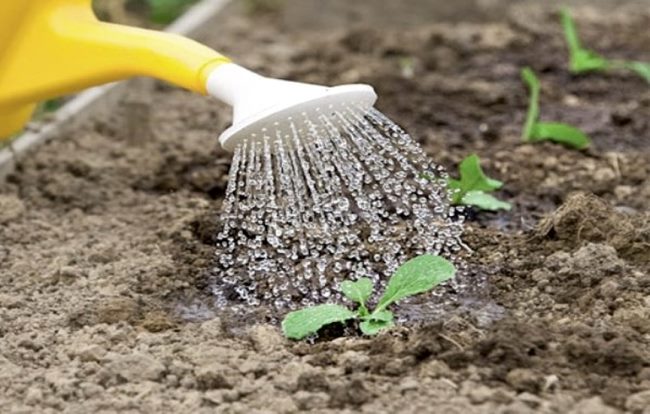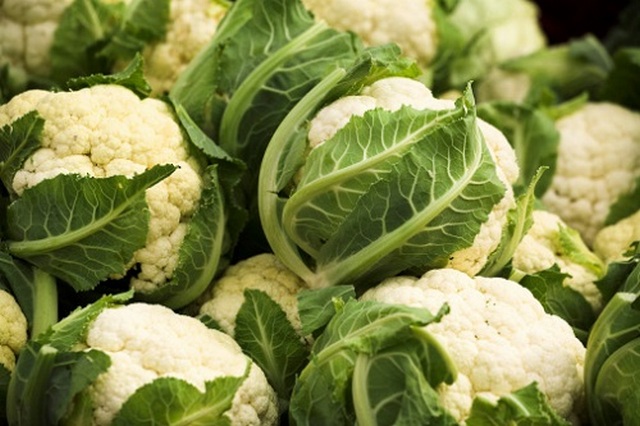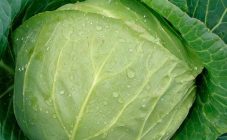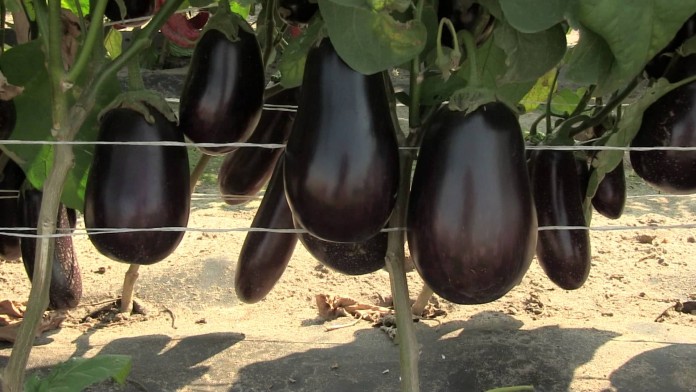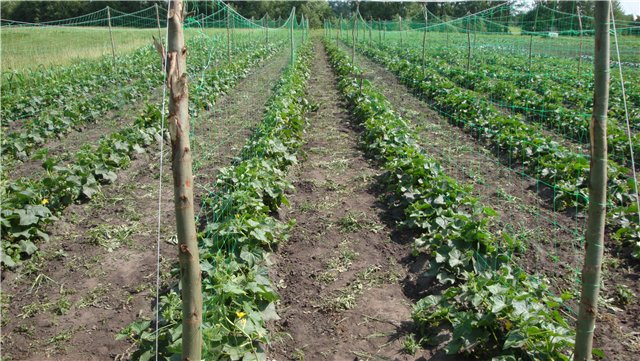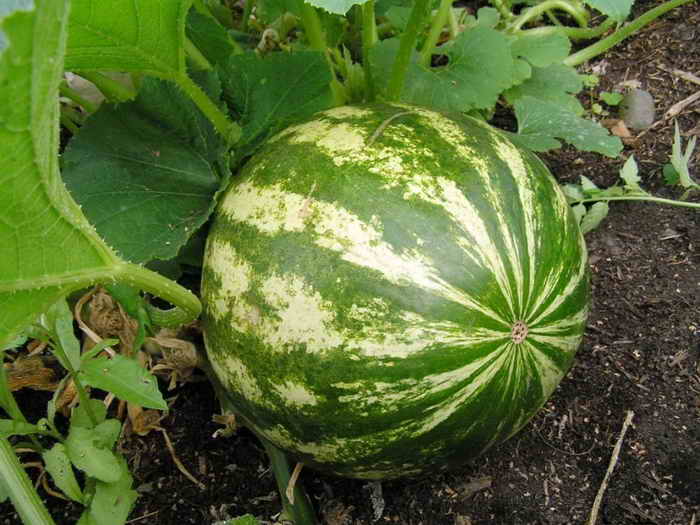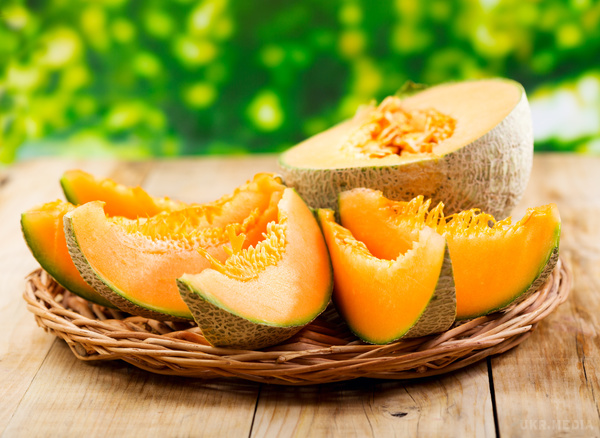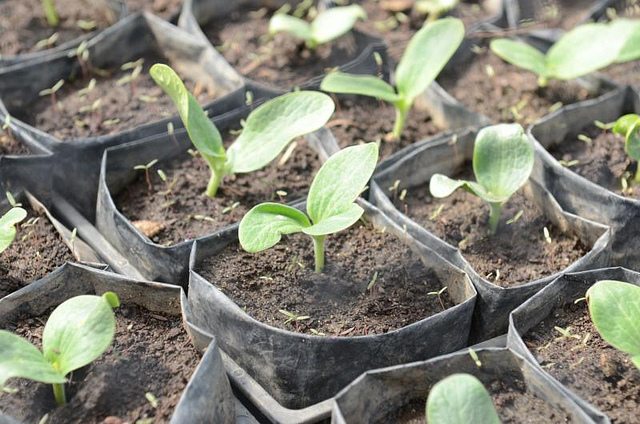Content:
Outdoor cultivation of cauliflower is the most common cultivation method for this crop. Its efficiency and productivity depends on adherence to agricultural technology and the presence of certain conditions.
Crop information, main varieties
Cauliflower belongs to the Cruciferous family. The culture has a fibrous root system that occurs in the upper soil layers. Dense flower clusters are used for food, the length of which is 2-15 cm. The crop has a mild taste with a light milky flavor. It is preferable to plant the culture in fertile loamy lands, on a plot without shading, with good access to sunlight.
The most common varieties of cauliflower include:
- Cauliflower Movir-74. Ripens in 50-55 days from the day of transplanting. Heads' weight varies from 0.3 to 1.0 kg. Can be cultivated from spring to autumn.
- Cauliflower Amazing F1. The growing season lasts 3-4 months. The weight of the fetus reaches 1.8 kg. Differs in increased productivity, uniform heads, good taste.
- Cauliflower Summer resident. Ripens in an average of 3 months and is characterized by a long fruiting period. The average weight of the fetus is 0.6 kg. It is characterized by good taste, high yield and winter hardiness. The optimal variety for the Moscow region and the European part of Russia in general.
- Cauliflower Guarantee. An early ripe variety that can open the fruiting season of the culture. It contains many vitamins and can be grown for processing in dietary and baby foods.
Growing seedlings
Sowing seeds to obtain seedlings is carried out one and a half months before it is transplanted into open ground. For early varieties, the sowing time is in the last decade of February. Mid-season and late cauliflower varieties are sown two and four weeks later, respectively.
Before sowing, cauliflower seeds are pre-sorted, removing diseased, small, defective ones. Then the seed is dipped inside a thermos with water heated to + 50 ° C for a quarter of an hour. Immediately after removing the seeds, they are placed for a minute in a container with cool water. After that, the seeds are soaked for 12 hours in a solution of trace elements that accelerate growth.
A mixture of lowland peat and humus in a ratio of 3: 1 is prepared as a substrate for seeds. It is recommended to supplement the soil mixture with the following fertilizers:
- 30 g superphosphate;
- 15 g potassium sulfate;
- 5 ml of boric acid.
In the early days, the seeds are kept at a temperature of about + 20 ° C. After the emergence of seedlings (usually after 4-5 days), the temperature is lowered to + 6 ... 8 ° C - this will not allow the seedlings to stretch in length. After another 5 days, the temperature is increased to + 15 ° C.
From time to time, seedlings need to be watered moderately. Too high humidity will cause plants to rot.
When 2-3 leaves appear in cauliflower seedlings, they are fertilized with boric acid (2 g / l). After 7-14 days, 5 g of molybdenum ammonium, diluted in a bucket of water, are added under the plants.
Cauliflower seedlings usually have a weak root system, which usually makes picking impossible. When growing seedlings in a common container, it is necessary to change the planting pattern by increasing the distance between the seeds when sowing and making the depth of the soil in the box equal to about 15 cm.This will make it easy to remove the seedlings together with the clod of earth and move it to a separate container. The procedure should be carried out no earlier than the seedlings reach two weeks of age. Until the plants take root in a new place, the temperature in the room should be maintained at + 20 ° C.
Outdoor transplant
When deciding when to plant cauliflower in open ground, take into account that by the time cauliflower seedlings are planted in unprotected soil, the plants should form 4-5 leaves and a full-fledged root system. Usually this period falls on April or May. The seedlings must be looked after and hardened. For this, the plants are placed in a cool greenhouse for 4-5 days. During the day, the seedlings must be ventilated, daily increasing the duration of the procedure.
Planting cauliflower outdoors should be done on a warm but cloudy day. Choose a well-lit area. The best predecessors for this culture are:
- bow;
- cucumbers;
- potatoes;
- legumes.
Do not plant after cabbage and any other member of the Cruciferous family. Cauliflower is demanding on neighbors, so it is preferable to grow near it:
- celery;
- beans;
- bow.
Planting holes are located at a distance of a quarter of a meter from each other, and the row spacing is increased to half a meter. A small amount of wood ash mixed with soil and a small amount of carbamide and superphosphate is added to the holes. The seedlings in the hole are buried to the first true leaves. After that, the ground in the root sector is lightly tamped and spilled with water. For the first few days, a plastic film is stretched over the plantings, fixing it along the edges of the grooves.
Rules for watering cauliflower
The full development of cauliflower plantations is impossible without sufficient moisture. In view of this, after planting, the plants are irrigated every 3-4 days. In the first weeks of cultivation, 6-8 liters of water should go per square meter of planting. As the cauliflower grows older, the volume is increased to 10-11 liters.
In hot dry weather, the intensity of irrigation is increased up to once every 2-3 days. In this case, it is necessary to pay attention to the state of the upper soil layer. Excessive moisture for cauliflower is no less dangerous than drying out and lack of moisture. Under conditions of waterlogging, pathogens of fungal diseases develop (especially against the background of warm weather), and the vegetative mass increases intensively to the detriment of the harvest.
Cauliflower dressing
During the growing season, it is necessary to carry out at least 3-4 fertilization. The first of them is carried out three weeks after transplanting cauliflower seedlings into open ground. A liter of cow manure solution is dissolved in a bucket of water. Pour about half a liter of the resulting organic fertilizer under each plant. Instead of a mullein, you can use bird droppings (primarily chicken). It is diluted in water in a 15: 1 ratio.
After a week and a half, a new top dressing is carried out.The preparation remains the same, but one tablespoon of Kristalina is added to it. The dosage for each cauliflower bush is increased to 1 liter.
After one and a half to two weeks, mineral fertilizers are applied under the plantings. Most often, Nitrofoska is used for this purpose, 2 tablespoons of which are dissolved in a 10-liter container with water. For each square meter, 6-8 liters of the drug are consumed.
An equally effective means of feeding is a mixture of the following fertilizers dissolved in 10 liters of water:
- 50 g superphosphate;
- 20 g of carbamide;
- 20 g of potassium chloride.
Plant protection
The crop in question throughout the growing season may be negatively affected by diseases and pests. Regular visual inspections of cauliflower bushes should be performed to detect symptoms of ailments or insect damage.
The most harmful diseases for colored culture are:
- Blackleg. The main symptom is a softening of the root collar and stem base. The indicated parts of the plant are colored black. Before sowing cauliflower seeds, it is necessary to disinfect the soil and seeds. If the disease has been detected on adult plants, then it is necessary to collect all affected specimens as soon as possible and destroy them, preventing further spread of pathogens throughout the site. The disease belongs to the category of viral, which cannot be treated with the use of fungicides.
- Keela. This fungal disease affects the root system. Specific growths are formed on the roots. A diseased cabbage bush must be completely removed.
- Mucous bacteriosis. In this case, watery marks begin to form on the head of the cauliflower. To stop the further spread of the infection, you should cut off the damaged area of the plant, capturing a small part of healthy plant tissue.
- Mosaic. A viral disease manifested in the form of specks of various shapes and colors on cabbage foliage. The disease cannot be cured, so all diseased specimens must be dug up and burned.
- Peronosporosis. The main symptom of this fungal disease is the appearance of yellow markings with a white coating on the leaf blades. To combat the disease, plantings are sprayed with a 1% solution of Bordeaux liquid or 0.4% polycarbocin solution.
Among pests, the greatest threat to cauliflower plantations is:
- cabbage flies;
- stem hidden proboscis;
- cruciferous fleas;
- aphids;
- butterflies;
- slugs, etc.
As pests or their larvae appear on the plantings of cauliflower, the cabbage is sprayed with those insecticides that correspond to insects. The most common and effective ones are:
- Actellik;
- Iskra-M;
- Entobacterin-3;
- Aktara and others.
In order not to resort to the cost of drugs, it is recommended to carry out preventive measures to prevent the appearance of pests in the beds. The main ones include:
- removal of the affected stems outside the site;
- the use of environmentally friendly biological solutions;
- careful removal of plant debris from the plot in the autumn;
- disinfection of seed, soil and soil;
- dusting the grooves with wood ash.
A good help for the gardener in plant protection is the use of folk remedies. So, on the day of planting of cauliflower seedlings, the plantings are dusted with fresh wood ash on the leaf after moistening. When the ash is washed off or blown away, the plants are re-pollinated. The procedure is repeated until the plants are relatively mature and the lower foliage is not coarse.Such specimens are not affected by flea beetles.
To prevent slugs from infesting cauliflower, it is necessary to place peculiar "barricades" of thorny, sharp and caustic materials around the plantings. These include:
- lime;
- mustard;
- coniferous litter;
- ash;
- dry pepper;
- ground eggshell.
After each precipitation, new fences have to be formed, since the old ones are eroded and become unusable.
It is necessary to promptly remove weeds from the root sector. Most often this is done after watering and subsequent careful loosening, the depth of which should not exceed 3-5 cm. At the same time, the hilling of the bushes is carried out. In this case, it is important not to fall asleep with earth the rosette hearts on which the growth points are located.
Mulching
This procedure is carried out to retain moisture in the soil and to protect the weak roots of cauliflower in the upper soil layers. Most often, peat or humus is used for this purpose.
Collection and storage of fruits
Seed packaging usually indicates the ripening period of the crop, but this is a conditional indicator, which is influenced by many factors. In particular, the cultivation conditions and temperature regime. Ripening of early maturing varieties of cauliflower usually occurs in the last decade of June - early July. Middle-ripening varieties are harvested in the second half of July. Late varieties, which can be stored for up to 5 months or longer without quality loss, are harvested from the last decade of August and throughout September.
The ripeness and maturity of the crop can be determined by the following indicators:
- light green or cream color of the inflorescence;
- head diameter 10-12 cm long;
- condensed fruit structure.
Inflorescences are cut off at the stem base, capturing 2-3 leaves. The crop is usually stored for about one and a half months, but to prolong its preservation, it is recommended to dig out the bushes together with the root system. This storage method is especially well suited for unripe specimens, which subsequently mature in wooden boxes filled with soil.
When folding the assembled heads into plastic or cardboard containers, they must be placed in rooms where the air temperature is constantly maintained at 0 ... + 2 ° С. The humidity in the room should be as high as possible - the optimal figure is 95%. Cauliflower inflorescences, cleaned of excess foliage, are well preserved in the refrigerator if they are previously tightly wrapped in cling film. Cut fruit into small pieces can be stored in the freezer. It is widely practiced to store cauliflower in basements and cellars. For this, the plants are fixed on wooden elongated sticks and lowered with their heads down.
With the selection of the most suitable varieties, the correct basic care and following the recommendations given, you can successfully grow a crop, achieve high and high-quality yields.
